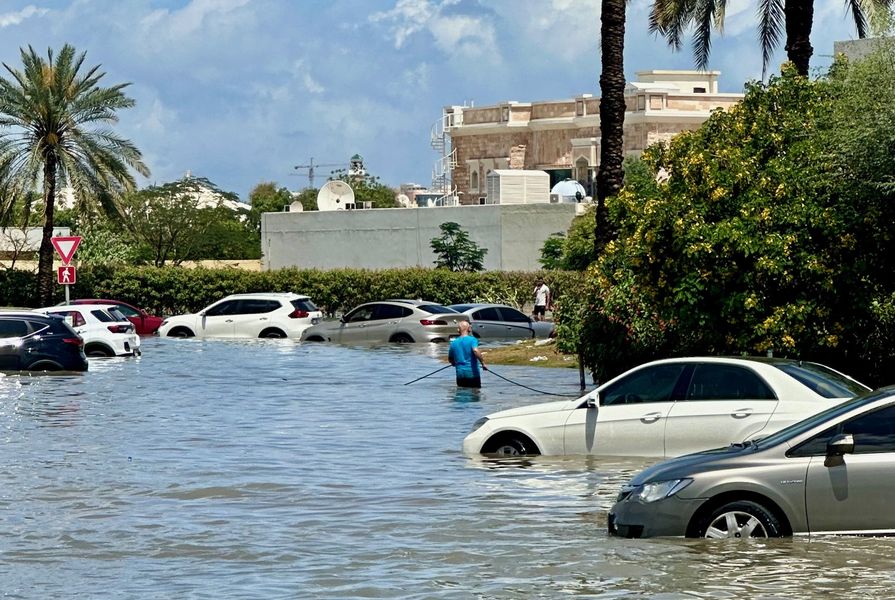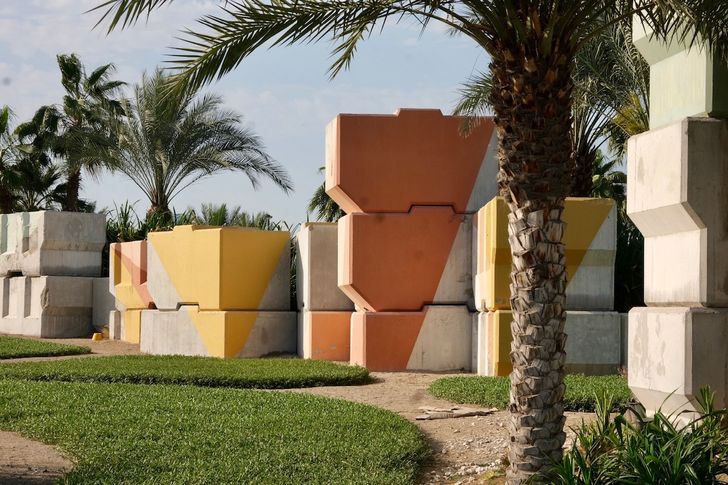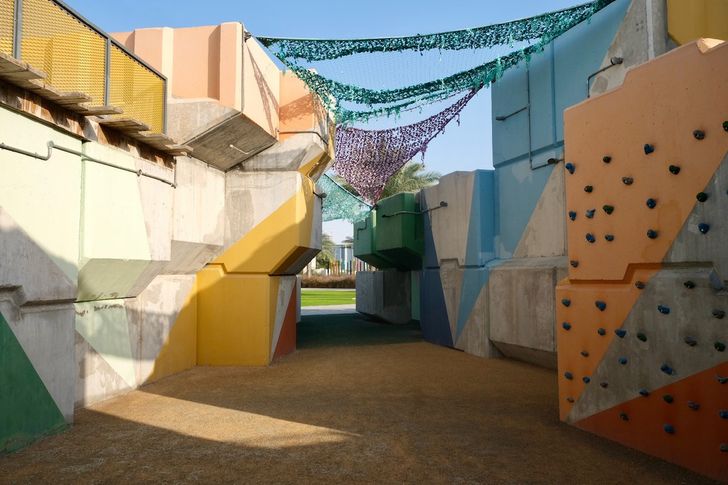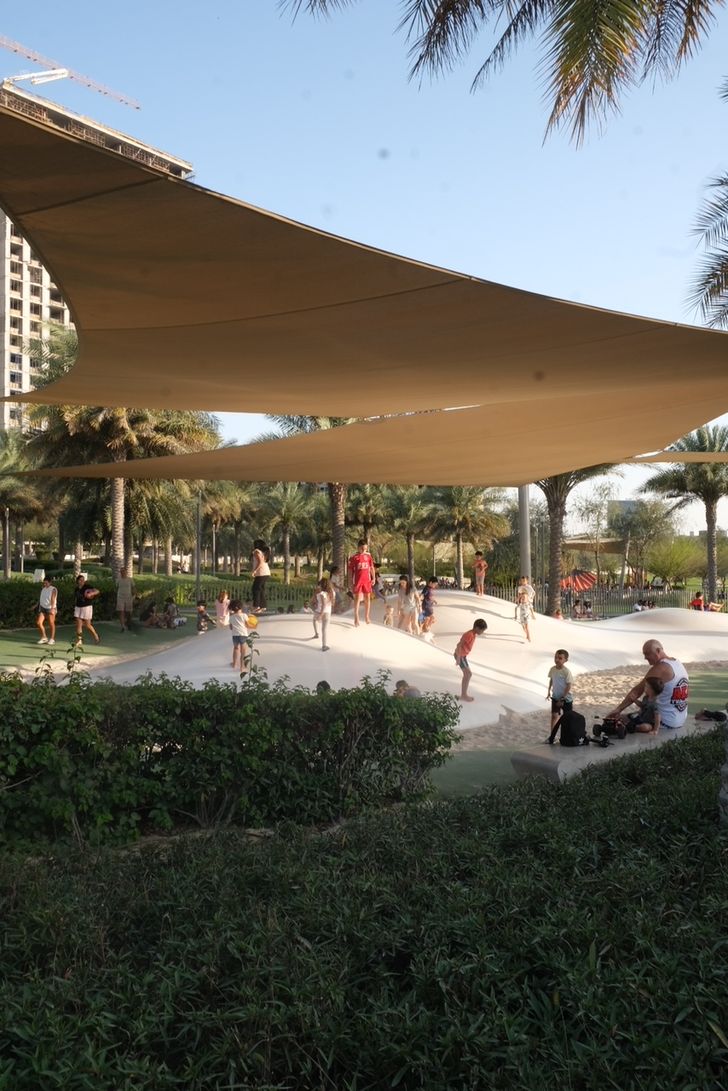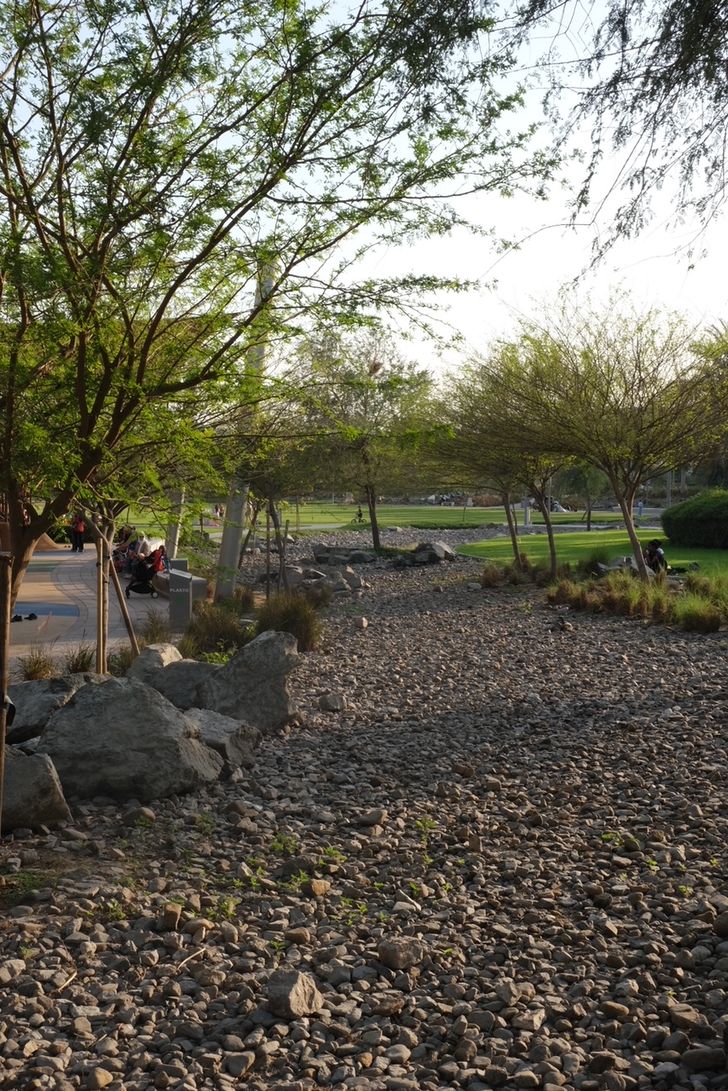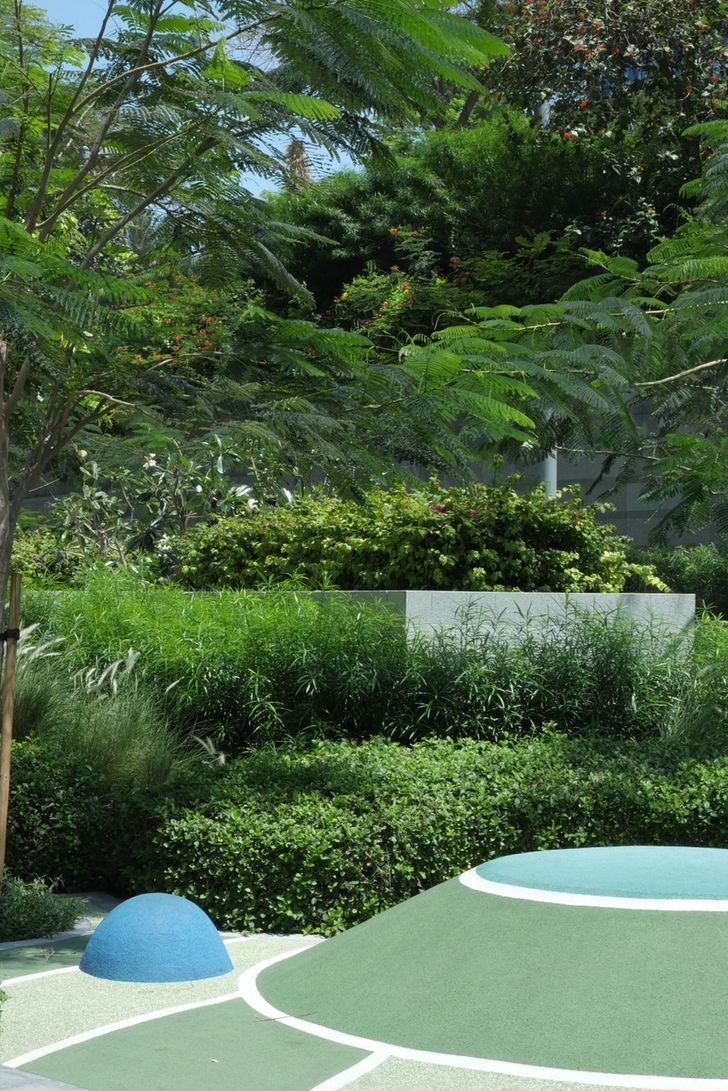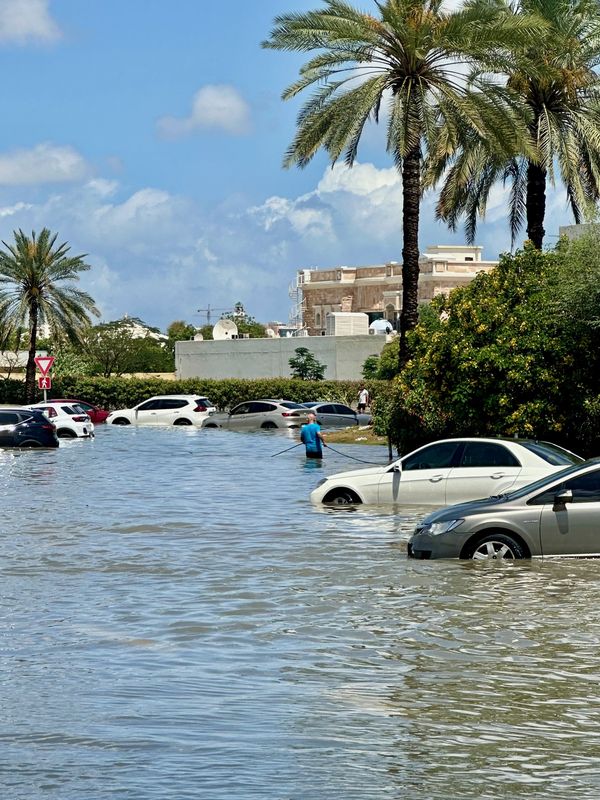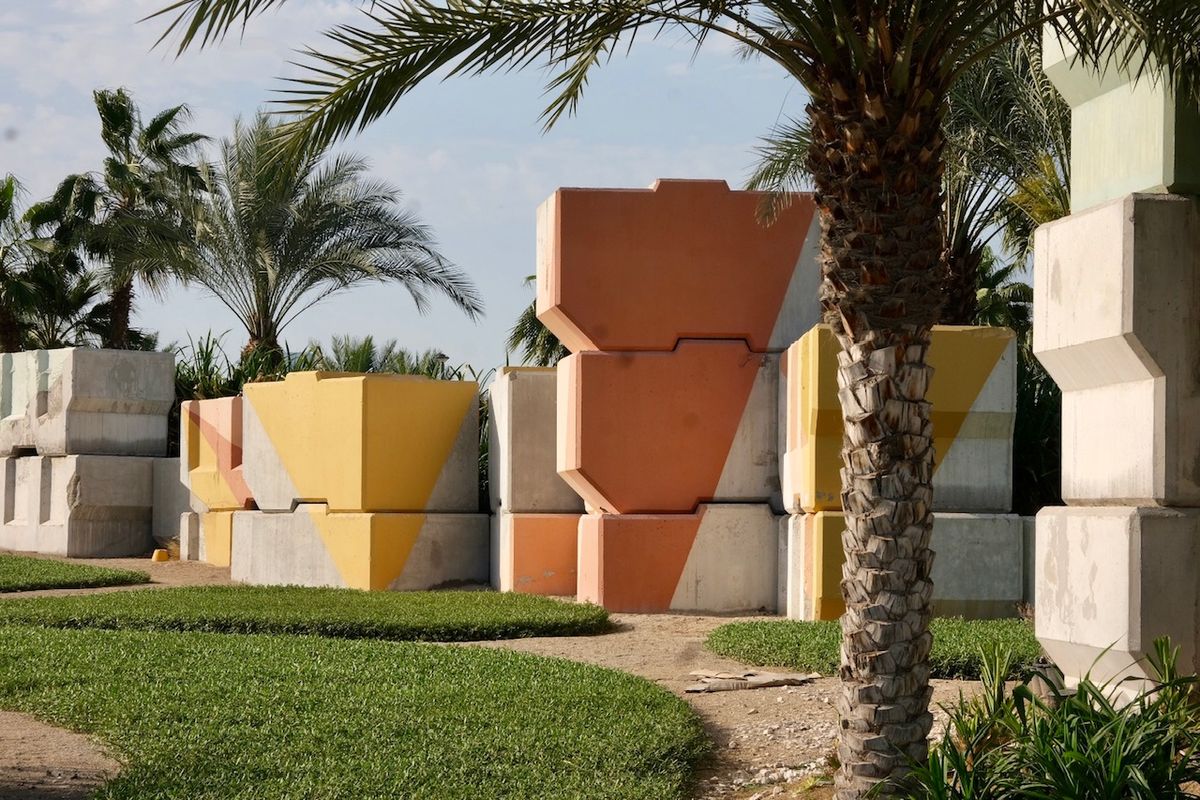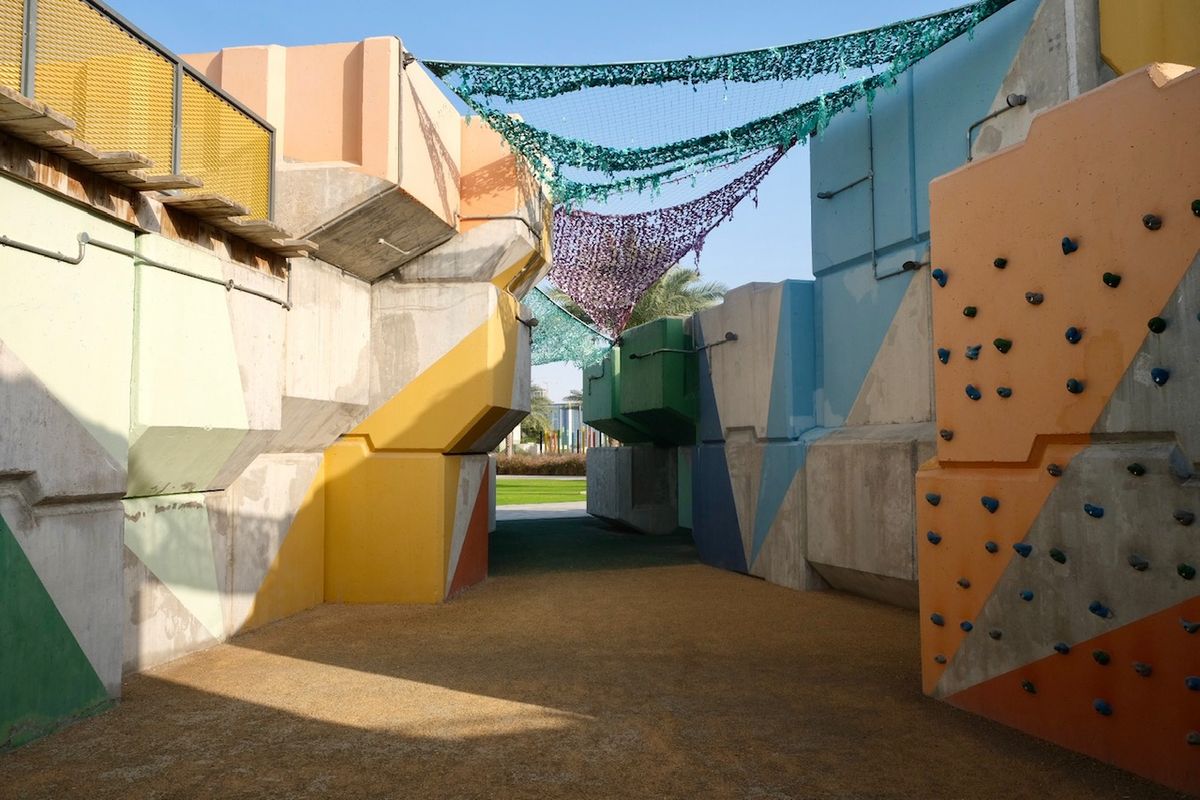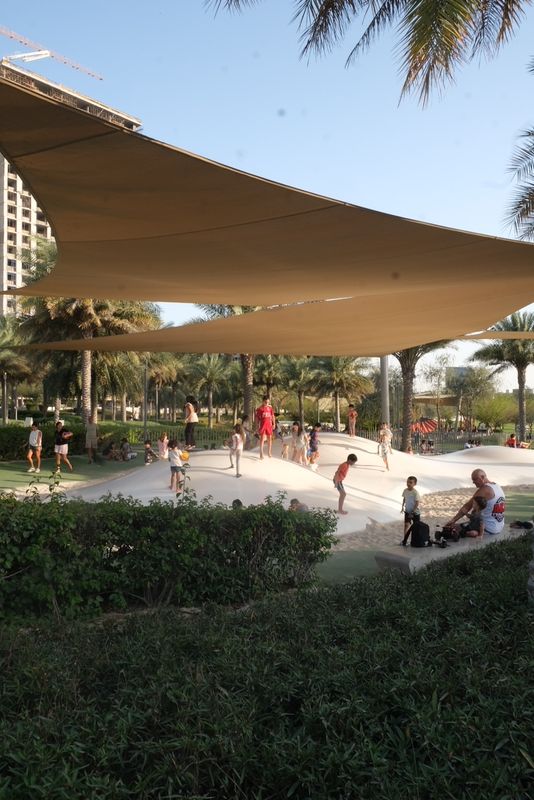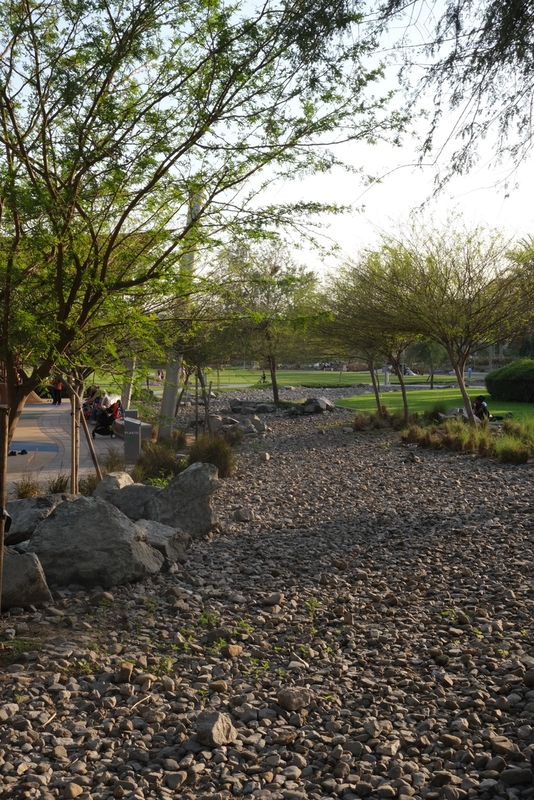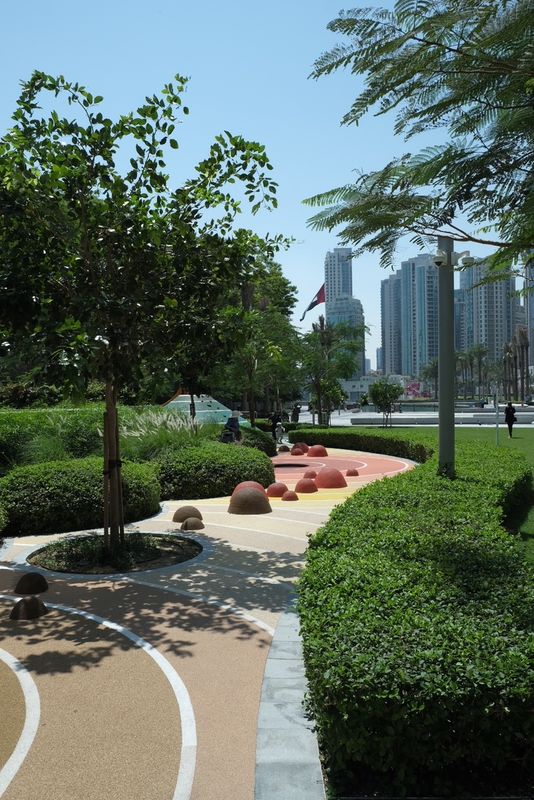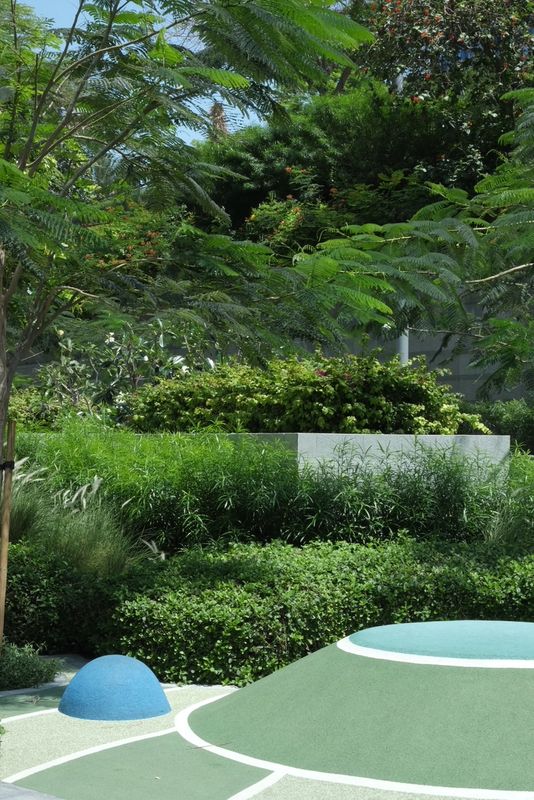In mid-April, the whole of Dubai came to a standstill as a result of torrential rain and flash flooding. The spectacle underlined the importance of designing resilience into critical urban infrastructure. Dubai is very close to sea level and incorporates a large number of grade-separated roads – this meant that there was nowhere for such an intense amount of water to go. The event brings home how imperative it is, with the climate changing and environmental conditions becoming more unpredictable, to use water sensitive urban design principles and to design landscapes that function as critical infrastructure.
Prior to this weather event, I visited a selection of relatively recent projects across the city and was impressed by what I experienced there. The Block designed by Desert Ink is something you don’t see a lot of in a city whose public spaces tend to be either high-end retail or community-based. This adaptive reuse project in the Dubai Design District (d3) is both delightful and robust. The designers re-used existing concrete revetment modules to create a playful series of spaces that include exercise equipment, skating bowls and some temporary lightweight modular retail units.
The Block designed by Desert Ink located in Dubai Design District (d3).
Image: Sacha Coles
The Block designed by Desert Ink located in Dubai Design District (d3).
Image: Sacha Coles
I also visited Dubai Hills Park by InSite international and Emaar. This typology – communal parklands as the centrepiece for a medium to high density residential community – is becoming increasingly common in Dubai. The parklands include water sensitive urban design, cycling and walking tracks and playgrounds, creating a high-quality good environment with flexible spaces for community use. The landscape is designed as the social and environmental infrastructure for the surrounding community. It seems to me that there has been a transition in Dubai landscape design from pattern-making and an emphasis on the visual, to landscape architecture which is performative and experiential – as evidence when the park is in “flood mode.”
Dubai Hills Park by InSite international and Emaar.
Image: Sacha Coles
Dubai Hills Park by InSite international and Emaar.
Image: Sacha Coles
The third project (and smallest project) I visited is at the foot of the Burj Khalifa, the world’s tallest building and one of Dubai’s main architectural icons. The scale of this building is almost incomprehensible – particularly at its base where layers of polished steel and glass sprawl outwards.
Burj Khalifa Play Space by SWA.
Image: Sacha Coles
A recent small-scale addition to the large community park here (known as the Burj Khalifa Tower Park) is a playful, colourful and shaded children’s play space – the Burj Khalifa Play Space. Designed by SWA, this is tucked into an edge of a sprawling grass area which abuts the park’s famously-over-the-top concrete water basin adorned with lights and water jets. I was taken by the design team’s investment in quality and attention to detail. Specifically, the horticultural choices and topographic mounding are the two key design tactics which give personality to this punchy park. The park suggests that there is an opportunity to do more of this kind of project in Dubai (rather than grand tourist spectacles) and that there is a desire here for high-quality open spaces with shade that are more socially focused.

